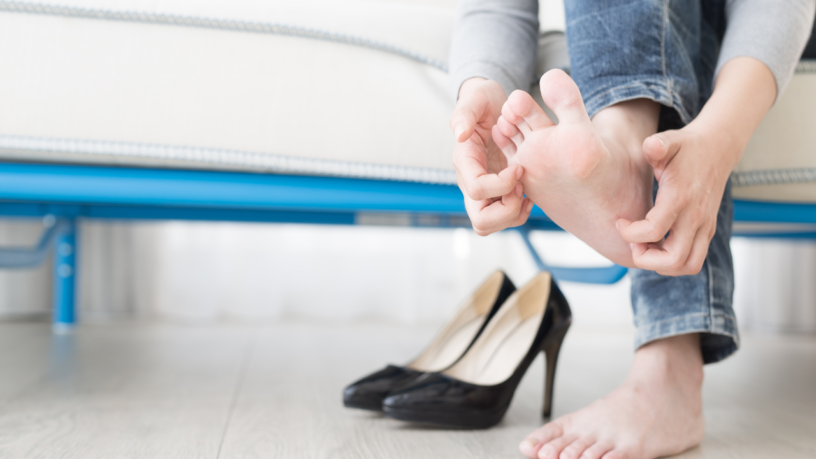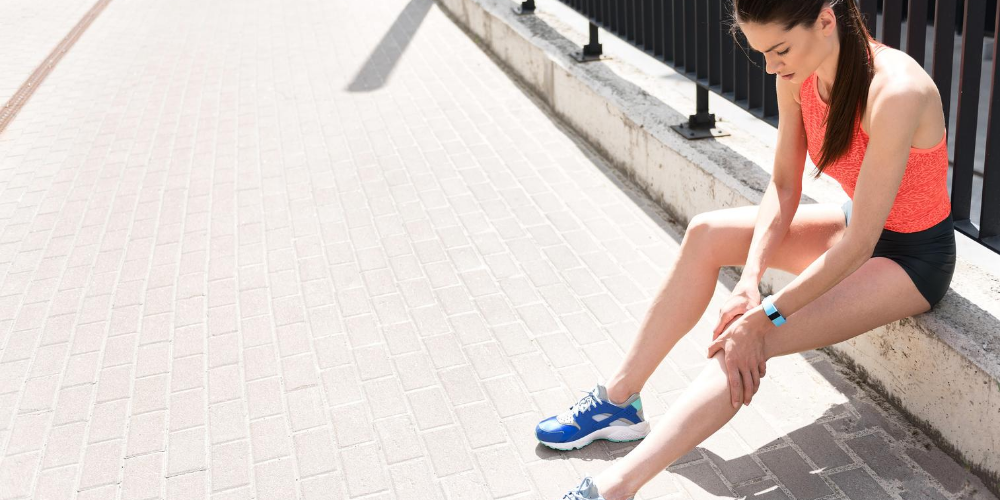Athlete’s foot, or tinea pedis in medical lingo, is a fungal infection of the top layers of the skin. The species of fungi infecting the skin go by the collective name of dermatophytes. Like most fungi, these thrive in damp, warm places. Other vulnerable areas are the groin (jock itch, or tinea cruris), and the head (ringworm, or tinea capitis). The sign of an athlete’s foot is red, flaky, itchy skin on the soles and heels. The toe webs may be involved. The skin may also blister and crack. The main treatment for fungal skin infections is the application of an over-the-counter antifungal cream, such as miconazole or clotrimazole. It can take up to a month for the skin to heal. Fungal nail infections, however, are more difficult to clear. Because topical antifungal creams often aren’t enough, doctors usually prescribe antifungal drugs taken by mouth.


1. Omega-Packed Salmon Fillets
How it works: The omega-3 fatty acids in high-oil fish, such as salmon, sardines, tuna, and mackerel, are anti-inflammatory. Studies suggest that diets higher in the omega-3 fatty acids found in fish oil may improve asthma.
- PREPARATION:
- 2 salmon fillets (6 to 8 ounces, or 170 to 225 g each)
- 2 teaspoons (10 ml) olive oil
- 1 to 2 tablespoons (14 g) bread crumbs
- ½ teaspoon dried tarragon
- 1 tablespoon (15 g) Dijon mustard
- Pinch of paprika
- Lemon slices, for garnish
- DIRECTIONS: Preheat the oven to 450°F (230°C, or gas mark 8). Rinse the salmon fillets and pat them dry. Lightly grease a glass baking dish with olive oil. Place the fish skin-side down in the dish. Mix the tarragon into the mustard and spread over the fish. Sprinkle each fillet with the bread crumbs and paprika. Bake for 10 to 15 minutes until just past pink in the center. Top with the lemon slices and serve.
- YIELD: 02 SERVINGS
2. Thyme and Oregano Footbath
How it works: A lab experiment compared the fungicidal (fungus-killing) power of several essential oils. In order from highest to lowest fungicidal activity were oregano, thyme, cinnamon, lemongrass, clove, palmarosa, peppermint, lavender, geranium, and tea tree. Adding salt and heat to the essential oil solution amplified the fungicidal power.
- PREPARATION:
- 1 quart (946 ml) water
- 2 tablespoons (5 g) dried thyme leaves
- 2 tablespoons (6 g) dried oregano leaves
- ¼ cup (72 g) salt
- DIRECTIONS: Boil the water in a saucepan. Turn off the heat, add the herbs, cover, and steep for 20 minutes. Stir in the salt. Reheat over low heat until the water feels warm but not scalding. Strain into a basin big enough for your feet. Soak your feet for 15 to 20 minutes until the water is no longer warm. Dry your feet, including between your toes, with a clean towel. Then put the towel in the laundry to wash (do not reuse without laundering).
- YIELD: 01 APPLICATION
- NOTE: Alternatively, you can put hot-to-tolerance water and salt in the foot basin. Stir in 5 drops of essential oil of oregano. You can use thyme essential oil instead, but only if you select the linalool type. The others are irritating to the skin and mucous membranes. Other alternatives include peppermint and lavender oil.
3. Foot-Friendly Vinegar Tincture
How it works: Vinegar contains acetic acid, which discourages fungal growth. Consistent application has often been met with success in clearing up a fungal infection. It may take several weeks, even months, but many people swear by it. Adding the plant essential oils, all of which have direct antifungal activity, may accelerate the process.
- PREPARATION:
- ¼ cup (60 ml) white, distilled, or apple cider vinegar
- 5 drops tea tree essential oil
- 5 drops peppermint essential oil
- 2 to 3 drops of eucalyptus essential oil
- DIRECTIONS: Combine all the ingredients in a jar and shake. Soak cotton balls in the mixture and apply, covering the affected area. If you have any solution left over, cap the jar tightly to prevent the evaporation of the plant essential oils.
- YIELD: 1 APPLICATION FOR EACH RECIPE/VARIATION
- RECIPE VARIATIONS:
- Pour enough vinegar into a small tub to immerse your toes or feet. Mix in the essential oils above. Soak for 2 minutes. Then rinse your toes and dry thoroughly with a clean towel. (Do not reuse the towel without laundering it.) Apply twice daily until the itch disappears. Then continue the application for one additional week.
- Because vinegar is acidic, it may irritate the skin. In that case, dilute the vinegar, using one part vinegar to three parts water. Mix in the essential oils. Soak for 15 minutes three times a week. When finished, rinse and dry as above.
- Some people are also sensitive to plant essential oils. If you have sensitive skin, try the vinegar or diluted vinegar solution alone. If you have no reaction, try one essential oil at a time. Don’t combine the three until you know your skin can tolerate it.
4. Garlic Fungal Chaser
How it works: Vampires merely ran at the sight of garlic, but microbes have less chance for a clean getaway. Garlic is a microbe-slayer. Its action includes antifungal power. Two studies have shown that ajoene, a compound found in garlic, heals the athlete’s foot. One of the studies, which lasted sixty days, showed that, in nearly fifty Venezuelan soldiers with athlete’s foot, a cream containing 1 percent ajoene had a 100 percent cure rate versus 94 percent for a cream containing 1 percent of the conventional antifungal terbinafine. The other study, conducted by the same research group, only followed the volunteers for two weeks. However, they reported a 79 percent cure by seven days, and a 100 percent cure after fourteen days of topical ajoene.
- PREPARATION:
- 1 garlic clove
- 1 to 2 teaspoons (5 to 10 ml) olive oil
- DIRECTIONS: Mash the garlic and olive oil together into a paste. Apply to the infected area. Remove after 1 hour.
- YIELD: 01 APPLICATION
- WARNING: Don’t use garlic alone, as this strong herb can irritate the skin. The olive oil creates a protective coating. Most people can tolerate 1 hour. Remove sooner if you have sensitive skin or the application causes discomfort.
- NOTE: Yes, your feet will smell a bit like garlic. (The plant wasn’t dubbed “the stinking rose” for nothing.) But most people aren’t going to sniff your feet. Here’s a fun experiment: The antimicrobial chemicals in garlic contain sulfur. Some of them absorb across your skin, into the bloodstream, and across the air sacs in your lungs. See whether a friend can smell garlic on your breath after the hour is up. If you dislike that smell (or others do), chew parsley leaves or fennel seeds.
5. Probiotic Foot Fix
How it works: Yogurt’s live ingredient, acidophilus makes lactic acid, which helps fight fungus. Daily application can soothe and help heal the infected area.
- PREPARATION: 2 to 3 tablespoons (30 to 45 g) plain yogurt (Make sure it has live cultures of acidophilus.)
- DIRECTIONS: Apply to the infected areas—toe webs, heels, and so on—for 15 to 20 minutes. Rinse off and dry feet thoroughly before putting on socks and shoes.
- YIELD: 01 APPLICATION
6. Clove and Cinnamon Soother
How it works: Studies show that these two pantry spices have antifungal properties that help foil common skin infections.
- PREPARATION:
- ¼ teaspoon cinnamon or clove essential oil
- 2½ teaspoons (13 ml) olive oil
- DIRECTIONS: Mix together the essential oil and olive oil. Test a little on a patch of skin before doing full-blown foot therapy.
- YIELD: 01 APPLICATION
7. Tea Bags for Happy Toes
How it works: Black tea contains tannic acid, which is antifungal. It helps fight the infection.
- PREPARATION:
- 1 quart (946 ml) water
- 6 black tea bags
- DIRECTIONS: Boil the water and steep the tea bags in it. Pour the water and tea bags into a small tub. When the tea has cooled enough to be comfortable, immerse your feet. Soak for 15 to 20 minutes. Rinse your feet after soaking and dry thoroughly before putting on your socks.
- YIELD: 01 APPLICATION
8. Cornstarch = Dry Feet
How it works: Cornstarch absorbs foot moisture that can help launch fungal infections. Cornstarch right from the box is a good start; but a quick browning in the oven removes its moisture, allowing it to take in more moisture from your feet.
- PREPARATION: ½ cup (64 g) cornstarch
- DIRECTIONS: Preheat the oven to 325°F (170°C, or gas mark 3). Spread the cornstarch across the bottom of a clean glass baking dish. Bake for 3 to 5 minutes until just browned on top. Remove from the oven and let cool. Rub onto affected areas before putting on your socks and shoes.
- YIELD: 01 APPLICATION
- NOTE: Shake a teaspoon (3 g) of the toasted cornstarch into your shoes to coat the insides— another way to absorb moisture.
9. Coconut Fungal Fighter
How it works: African studies show that virgin coconut oil, a folk remedy for treating such fungal skin infections as athlete’s foot and ringworm, has antifungal properties. Likewise, turmeric is an antifungal agent.
- PREPARATION:
- ¼ cup (56 g) coconut oil
- 1 teaspoon (2 g) ground turmeric
- DIRECTIONS: Over low heat, melt the oil in a pan. It happens in a matter of seconds. Whisk in the turmeric. Turn off the heat. Pour the mixture into a clean dish. When cool, spread on the affected area. Allow to soak in for 15 to 20 minutes. Rinse off and dry the area thoroughly.
- YIELD: 01 APPLICATION
- NOTE: Turmeric is traditionally used to dye fabrics yellow. It will temporarily stain your skin and permanently stain clothing.
10. Vicks-en Toenail Treatment
How it works: Hydrogen peroxide is antifungal. Vicks VapoRub contains essential oils from plants with antifungal activity, specifical thymol from thyme, menthol from peppermint, eucalyptol from eucalyptus, and camphor from a relative of cinnamon (Cinnamomum camphora).
- PREPARATION:
- Hydrogen peroxide
- Vicks VapoRub
- DIRECTIONS:
In the evening, shower and wash your toes carefully or soak and wash your toes in a small tub of warm water. Dry them thoroughly with a clean towel (launder the towel after each use).
Wet a cotton ball with hydrogen peroxide and apply it to each toenail, using a fresh cotton ball for each nail so as not to spread infection. Let your toes air dry or pat them dry after the peroxide foaming subsides.
Make sure they are thoroughly dry, and then coat each toenail with Vicks. Cover your feet with cotton socks (which you must wash after wearing); this keeps the Vicks working on your toes and off your sheets.
- YIELD: 01 APPLICATION
Lifestyle Tip
- To prevent athlete’s foot, practice good hygiene:
- Keep your feet dry. If your feet sweat, change your socks. Put talcum powder or cornstarch in your shoes.
- Wear socks that absorb and wick away moisture. Although many doctors recommend cotton, a good alternative is a wool, which you can now find in all styles and thicknesses.
- In hot weather, wear sandals or other shoes with good ventilation.
- Air out shoes after each use.
- Don’t share socks, shoes, towels, or nail clippers with someone with athlete’s foot or fungal nail infection.
- Sprinkle baking soda in your shoes to absorb moisture. Your feet will stay drier longer. Like cornstarch, baking soda will absorb sweat and hinder the fungi that thrive in damp conditions.
- Eat garlic. To complement the garlic salve recipe for the outside of your feet, try this simple treatment to attack from the inside, too: Mince one to two garlic cloves and stir into your food, whether eggs, rice, soups, or mashed potatoes. Or pop a 500 to 600 milligram capsule of garlic each day.
When to Call the Doctor
- You can’t clear the infection after two weeks of using home remedies or over-the-counter antifungal creams. It may be time to try prescription antifungal medication.
- The fungal infection is spreading.
- The soles of your feet begin to blister.
- Your skin becomes cracked, reddened, swollen, and painful.
- You see pus or red streaks extending from the infected area.
- You develop a fever.
- You have diabetes and have any sign of infection on your feet.






Leave a Reply